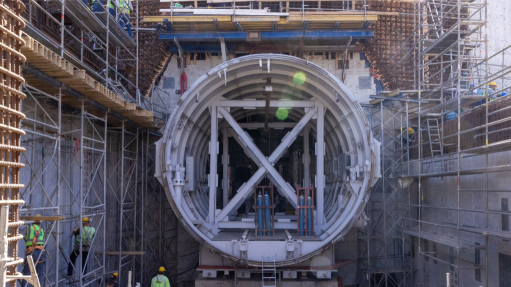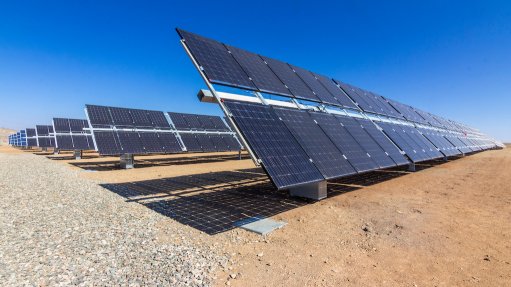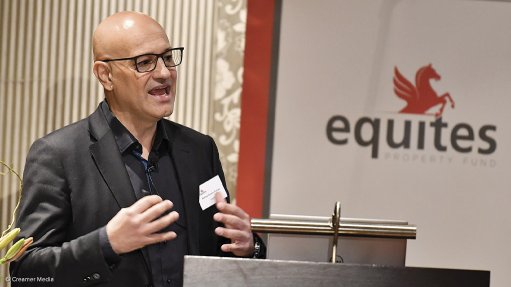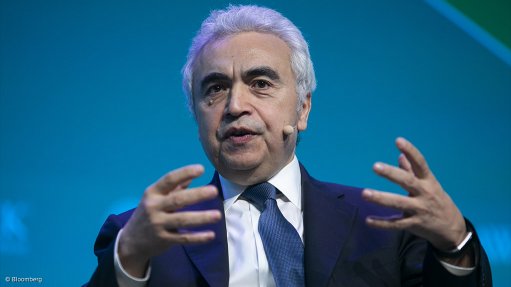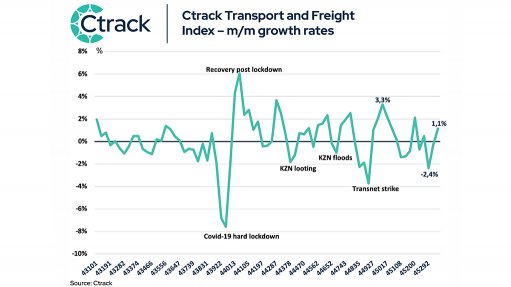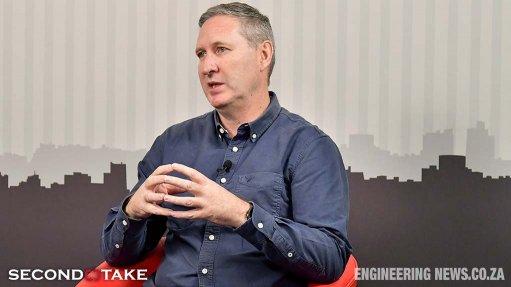Global FDI fell by 12% in 2022 – Unctad
Global foreign direct investment (FDI) fell by 12% to $1.3-trillion in 2022, the ‘World Investment Report 2023’, released by the United Nations Conference on Trade and Development (Unctad) on July 5, shows.
This followed a sharp decline in FDI in 2020 and a strong recovery in 2021.
“The prospects for international investment looked extremely gloomy last year, with a cascading crisis of health, climate change and economic shocks causing investor uncertainty around the world.
“Rising inflation, fears of a recession and turbulence in financial markets put many investment plans on hold at the beginning of the year. In the end, international investment flows did suffer, but proved more resilient than expected,” Unctad secretary-general Rebeca Grynspan said upon the launch of the report.
According to the report, the main causes of the slowdown in FDI were the war in Ukraine, high food and energy prices and debt pressure. Greater financial constraints, higher interest rates and uncertainty in the capital markets had a particularly negative impact on international project finance and cross-border mergers and acquisitions (M&As).
Unctad believes this will continue to make it difficult to conduct business internationally and to make cross-border investments, since the economic headwinds that influenced investment trends last year remain, albeit to a lesser extent. Geopolitical tensions remain high and investor unease has increased in response to recent financial sector unrest.
As such, Unctad expects downward pressure on global FDI to continue this year. The first quarter's early indicators point to weak trends in international project financing and M&As.
Trends in greenfield investment, however, serve as a helpful counterbalance, the report reveals, with data from the first quarter demonstrating resilience. Project announcements were up 15% from the previous year. As a result, trends in foreign investment in real productive assets are more encouraging than the headline FDI data indicate.
Multinational enterprises (MNEs) in developed economies, where FDI fell by 37% to $378-billion in 2022, were primarily responsible for the decline in FDI flows. Notwithstanding, there were 5% more actual greenfield and project finance announcements.
A record share of more than 70% of global FDI flows – a $916-billion increase – went to developing nations. There were 37% more greenfield investment projects announced in developing nations, with 5% more international project finance deals. Unctad’s report says that this bodes well for future industrial and infrastructure investment opportunities.
Meanwhile, in developing nations, FDI increased but in unequal amounts. A small number of significant emerging economies accounted for the bulk of the growth.
Following abnormally high levels in 2021, brought on by a single financial transaction, FDI in Africa decreased to $45-billion – the same level as in 2019. International project finance deals increased by 15%, while greenfield project announcements increased by 39%. The largest growth was in the energy sector, which includes energy production as well as extractives.
With a flat $662-billion in FDI inflows, developing Asia still received more than half of all FDI worldwide. The two recipients who saw the greatest growth in project announcements were India and the Association of Southeast Asian Nations, with increases of 10% and 5%, respectively. China, the second-largest FDI host nation globally, experienced an increase of 5%.
Meanwhile, FDI decreased in the Gulf region, but there were two-thirds more project announcements.
Flows to Latin America and the Caribbean increased by 51%, reaching a record high of $208-billion. Earnings reinvested by foreign affiliates in the extractive industries increased as commodity prices rose. Regional project growth was more subdued, with 14% more greenfield announcements and a drop in global project finance deals.
The Unctad report shows that the amount of FDI going to vulnerable and weak economies decreased. FDI in the 46 least developed countries (LDCs), which makes up less than 2% of all FDI worldwide, decreased by 16% to $22-billion, despite an overall increase in developing countries.
Greenfield project announcements to LDCs increased somewhat following the decline in 2020/21, but they remained significantly below their 10-year average. FDI increased slightly in small island developing States and landlocked developing countries.
The report reveals that global value chain-intensive industries of infrastructure and energy saw an increase in project numbers, while the digital economy sectors experienced a slowdown.
The number and value of global value chain projects increased in sectors such as electronics, automotive, and machinery, which are under pressure to restructure their supply chains. To address the global chip shortage, three of the top five announced investment projects were in semiconductors.
Overall stability was seen in the largest MNEs' level of internationalisation, as measured by the proportion of foreign assets to total assets, sales and employment. Overseas sales continued to grow last year at a faster rate than assets and employment, as was observed in previous World Investment Reports.
In contrast to prior years, when this was driven by asset-light MNEs in the digital economy, last year this was a result of high energy prices, which increased the profits of businesses in the oil and gas, commodities trading and utilities sectors. While the value of the top 100 MNEs' overseas assets slightly decreased, their overseas sales increased by more than 10%.
In developing countries, foreign investment increased last year in industries important to the UN’s Sustainable Development Goals (SDGs). Project numbers increased in the areas of infrastructure, energy, water and sanitation, agrifood systems, health and education. Although the SDGs were adopted in 2015, the report shows that growth since then has been comparatively muted because of the early years' slow growth and the pandemic's sharp drop in investment.
Even less money is being invested into agri-food systems than in 2015.
The investment gap across all SDG sectors has grown from an estimated $2.5-trillion in 2014, just prior to the adoption of the SDGs, to more than $4-trillion a year today, according to a review of investment needs at the halfway point of the 2030 Agenda for Sustainable Development.
Infrastructure for energy, water and transportation all have significant gaps as well. Underinvestment as well as new demands are what has led to the increase, Unctad says.
In 2022, the growth of investments in renewable energy slowed. Although international project finance deals, which are typically bigger, declined, greenfield investment announcements increased. Even though the total amount of international investment in renewables has nearly tripled since 2015, the growth rate in developing nations has only just outpaced GDP growth. Meanwhile, investment in renewable energy has increased more slowly than GDP in LDCs.
In general, the Unctad report shows that renewable energy supply chains are seeing an increase in global investment. In critical minerals, there were more new projects announced in 2021 and 2022 than there had been on average over the previous ten years.
Although at a low level, investment projects in the manufacture of solar and wind components are also rising. In 2022, the value of announced projects in battery manufacturing will triple to more than $100-billion. A few developing nations have attracted sizeable investments, but most projects are in the manufacturing hubs of the US and Europe.
In terms of fossil fuel disinvestment, the top 100 MNEs in the energy sector are selling off their fossil fuel assets at a rate of about $15-billion a year. Private equity funds, smaller players in the industry, and commodity traders account for most buyers.
“The recommendations of this report will be the subject of discussions at Unctad’s World Investment Forum (WIF) in October this year in Abu Dhabi. Taking place ahead of COP28, in the same location, the WIF2023 offers a platform for policymakers at the highest levels, and for the broadest possible constituency of investment-for-development stakeholders, to translate them into concrete action,” Grynspan said.
Comments
Press Office
Announcements
What's On
Subscribe to improve your user experience...
Option 1 (equivalent of R125 a month):
Receive a weekly copy of Creamer Media's Engineering News & Mining Weekly magazine
(print copy for those in South Africa and e-magazine for those outside of South Africa)
Receive daily email newsletters
Access to full search results
Access archive of magazine back copies
Access to Projects in Progress
Access to ONE Research Report of your choice in PDF format
Option 2 (equivalent of R375 a month):
All benefits from Option 1
PLUS
Access to Creamer Media's Research Channel Africa for ALL Research Reports, in PDF format, on various industrial and mining sectors
including Electricity; Water; Energy Transition; Hydrogen; Roads, Rail and Ports; Coal; Gold; Platinum; Battery Metals; etc.
Already a subscriber?
Forgotten your password?
Receive weekly copy of Creamer Media's Engineering News & Mining Weekly magazine (print copy for those in South Africa and e-magazine for those outside of South Africa)
➕
Recieve daily email newsletters
➕
Access to full search results
➕
Access archive of magazine back copies
➕
Access to Projects in Progress
➕
Access to ONE Research Report of your choice in PDF format
RESEARCH CHANNEL AFRICA
R4500 (equivalent of R375 a month)
SUBSCRIBEAll benefits from Option 1
➕
Access to Creamer Media's Research Channel Africa for ALL Research Reports on various industrial and mining sectors, in PDF format, including on:
Electricity
➕
Water
➕
Energy Transition
➕
Hydrogen
➕
Roads, Rail and Ports
➕
Coal
➕
Gold
➕
Platinum
➕
Battery Metals
➕
etc.
Receive all benefits from Option 1 or Option 2 delivered to numerous people at your company
➕
Multiple User names and Passwords for simultaneous log-ins
➕
Intranet integration access to all in your organisation









